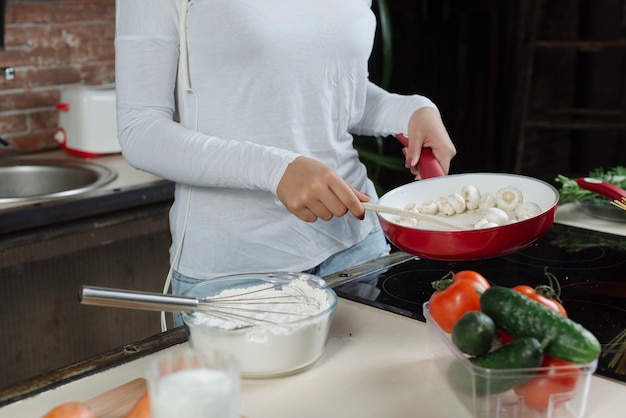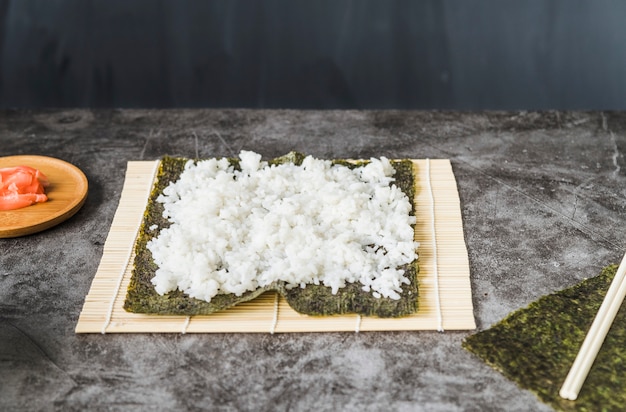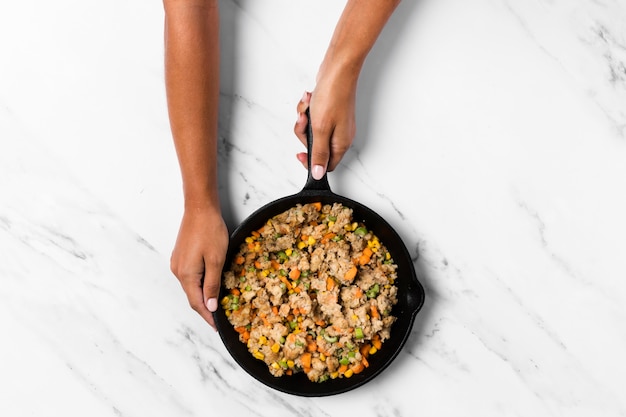Rice. It's a culinary chameleon, adapting to any dish and any cuisine. A fluffy bed for curries, a comforting side for roast dinners, a base for stir-fries, even a sweet treat in the form of rice pudding – it's truly a versatile pantry staple. But, there's nothing more disheartening than a pot of rice that's gone wrong. You know what I mean – dry, clumpy, or worse, burnt. It can ruin an entire meal, especially when you're craving a quick and easy dinner.
I’ve had my fair share of rice disasters. There was that time I attempted a fancy saffron rice for a dinner party. The recipe seemed straightforward, but the rice ended up a sticky, dry mess. It was enough to make me question my culinary skills! But that was a turning point. Determined to conquer this seemingly simple yet surprisingly tricky dish, I embarked on a quest for perfect rice. After endless experiments, tweaking ratios, and learning from my mistakes, I finally cracked the code. And now, I’m sharing my secrets with you, from choosing the right rice to mastering the art of the perfect fluff.
Part 1: The Foundation of Good Rice

Choosing the Right Rice
Let's start with the basics: choosing the right type of rice. It might seem obvious, but there's a whole world of rice varieties out there, each with its own unique texture and flavour. For everyday cooking, I usually gravitate towards long-grain white rice. It's a classic for a reason – it cooks up fluffy and light, absorbing flavours without overpowering them. It's also the most widely available, so you'll find it in any supermarket.
But, don’t be afraid to branch out! If you’re feeling adventurous, basmati rice is a lovely option, known for its subtle floral aroma and long, slender grains. Or, for a more wholesome choice, there's brown rice, rich in nutrients and boasting a nutty flavour and chewy texture. However, be warned – brown rice takes a bit longer to cook than white rice. But if you're looking for the ultimate fluffy texture, long-grain white rice is your best bet.
The Importance of Freshness
Once you've chosen your rice, give it a quick sniff. Fresh rice should smell neutral, almost like… well, nothing! If you detect a musty or stale scent, it’s a good sign that it’s past its prime. And while it might not seem like a big deal, freshness really does impact the flavour and texture of your rice. You'll notice the difference!
The Rinse
This is where many cooks take a shortcut, but it's a crucial step for perfect rice. Rinsing your rice under cold water until the water runs clear helps to remove excess starch. Think of it as a little rice spa treatment! This excess starch is the culprit behind sticky, clumpy rice, so rinsing it away ensures a fluffy, separate texture. Don’t be shy – really give the rice a good rinse. It's worth the extra minute or two.
Part 2: Setting the Scene for Perfect Rice

The Right Pot
You’d be surprised how much your pot can influence the outcome of your rice. You want a pot that distributes heat evenly and has a lid that fits snugly. A heavy-bottomed pot is ideal for preventing hot spots, which can lead to uneven cooking and burnt rice. A good lid helps trap the steam, ensuring that the rice cooks through evenly.
I personally swear by my trusty stainless steel pot. It's durable, heats up quickly, and the clear glass lid lets me keep an eye on the rice as it cooks. But, if you prefer, a non-stick pot can work just as well. No matter your choice, make sure the pot is clean and dry before you start cooking.
The Ratio
This is the heart of the matter. The golden ratio for perfect rice is 1:2, meaning one cup of rice to two cups of water. It's a simple formula that consistently delivers delicious results. I’ve experimented with different ratios in the past, but I always come back to this one – it's the key to unlocking fluffy, perfectly cooked rice.
The Salt
A tiny pinch of salt may seem insignificant, but it makes a world of difference. Salt enhances the flavour of the rice, bringing out its natural sweetness and preventing it from tasting bland. Don't be afraid to add a good pinch – trust me, your tastebuds will thank you.
Part 3: The Art of the Cook

Bring It to a Boil
With your rinsed rice and water in your pot, give it a gentle stir and bring it to a rolling boil over high heat. You'll know it's boiling when you see the water bubbling furiously. Don't be alarmed if the rice looks a bit milky at this stage – it's normal!
Reduce the Heat
Once the water is bubbling away, immediately reduce the heat to a low simmer. Cover the pot with the lid and let the rice simmer gently for about 15 minutes. This is where the magic happens – the rice cooks through and absorbs all the moisture, becoming tender and fluffy.
Resist the temptation to lift the lid during this time. You want to trap the steam inside, allowing the rice to cook evenly. The only time to peek is after about 10 minutes, when you can gently stir the rice. This ensures that all the grains are cooking evenly and prevents them from sticking to the bottom of the pot.
The Rest
After 15 minutes of simmering, turn off the heat and let the rice rest, covered, for another 10 minutes. This is an essential step. The rice will continue to absorb the remaining moisture, becoming perfectly fluffy and plump.
Fluff It Up
Once the resting period is over, fluff the rice with a fork. This releases any remaining steam and prevents the rice from becoming clumpy. And that's it! Your perfectly fluffy rice is ready to be devoured.
Part 4: Getting Creative with Flavour
The Basics
Now comes the fun part – adding flavour. You can start with the basics: a knob of butter or a drizzle of olive oil for a touch of richness and shine. Fresh herbs, like parsley or chives, add a burst of freshness, while a squeeze of lemon juice brightens everything up.
Simple, yet effective. But you can also experiment with spices. A pinch of cumin or turmeric adds warmth and depth, while a dash of black pepper brings out the flavour of the rice.
Beyond the Basics
If you're feeling adventurous, try incorporating roasted vegetables into your rice. Roasted bell peppers, onions, or even broccoli florets add sweetness and a smoky flavour. You can also stir in some cooked chicken or shrimp for a more substantial meal.
The possibilities are endless, so feel free to experiment and find what you love!
Part 5: Serving Up Perfection
Keeping It Warm
If you're not serving your rice immediately, keep it warm in a covered pot or container on the stovetop over low heat. Just a gentle simmer will do the trick. However, be careful not to overcook the rice – it can dry out.
Leftovers
leftover rice is a culinary blessing! It's a perfect base for quick and easy lunches and dinners. Reheat it in the microwave or on the stovetop, adding a splash of water or broth to prevent it from becoming dry.
I love using leftover rice for rice bowls, fried rice, or even a delicious rice pudding. It's a great way to use up leftover food and avoid waste.
Part 6: Troubleshooting Common Rice Mishaps
sticky rice
Let's face it, sticky rice isn't exactly a dream come true. There are a few reasons why your rice might be a bit too clingy. The most common culprit is not rinsing the rice properly. Excess starch can make the rice clumpy and sticky.
Another reason could be overcrowding the pot. If the rice is tightly packed, it won't cook evenly and can become sticky. Make sure to leave some space between the grains so they have room to cook properly.
Dry Rice
Dry rice, on the other hand, is crumbly and lacks that satisfying fluffy texture. It's often the result of using too little water or not allowing the rice to cook long enough. You can also overcook rice, which can lead to a dry, crumbly texture.
Burnt Rice
Ah, the dreaded burnt rice. This indicates a pot that's too hot. If you see the rice starting to brown on the bottom of the pot, immediately reduce the heat or transfer the rice to a new pot.
If you've already got burnt rice, don't despair! You can usually salvage some of the unburnt rice and use it in other dishes.
Part 7: Mastering Different Rice Techniques
rice cooker
If you're looking for an easier way to cook rice, a rice cooker is a fantastic investment. Rice cookers are designed specifically to cook rice to perfection, making it a foolproof option.
Simply add the rice and water to the rice cooker, press the start button, and let the machine do its thing. Most rice cookers have a built-in timer that automatically keeps the rice warm until you're ready to serve it.
instant pot
Another popular appliance that can cook rice is the Instant Pot. The Instant Pot uses high pressure to cook rice quickly and evenly, making it perfect for busy weeknights.
Most Instant Pots have a dedicated rice setting, making it a breeze to cook perfect rice in minutes.
Part 8: Exploring the World of Rice Dishes
Rice Bowls
Rice bowls are a truly versatile and delicious way to enjoy rice. Build your own bowls with your favourite toppings, such as grilled chicken, roasted vegetables, avocado, and a drizzle of sriracha.
The combinations are endless, making rice bowls perfect for a quick and healthy meal.
Fried Rice
Fried rice is a classic Asian dish that's perfect for using up leftover rice. Simply stir-fry your leftover rice with eggs, vegetables, and your favourite protein. It's a quick and easy way to create a flavourful and satisfying meal.
Risotto
Risotto is a creamy Italian rice dish that's made with arborio rice. It's cooked in a broth and typically includes cheese and other ingredients like mushrooms or seafood.
Risotto takes a little more time and effort than basic rice, but it's a truly rewarding dish.
Rice Pudding
Rice pudding is a sweet and comforting dessert that's perfect for a cold winter night. It's made with rice, milk, sugar, and spices like cinnamon or nutmeg.
Rice pudding is a simple and delicious dessert that's sure to please everyone.
FAQs
Here are some frequently asked questions about cooking rice:
| Question | Answer |
|---|---|
| Can I use any type of rice for stovetop cooking? | While you can experiment with different rice types, long-grain white rice is generally considered the best option for stovetop cooking. It cooks evenly and produces a fluffy texture. |
| What if I don't have a heavy-bottomed pot? | You can still cook rice in a thinner pot, but it might require a little more attention. Be careful not to let the rice burn at the bottom of the pot. |
| How do I know when the rice is done? | The rice is done when the water has been absorbed and the rice is tender. You can check by gently pressing on a rice grain with a fork. If it's soft and fluffy, it's ready. |
| Can I add other ingredients to the rice while it's cooking? | It's generally best to add ingredients after the rice has cooked. This will help to prevent them from overcooking or becoming mushy. |
| What should I do if my rice turns out sticky? | Don't worry! You can fluff the rice with a fork to separate the grains. If the rice is still too sticky, you can add a little bit of butter or olive oil to help loosen it up. |
Remember, cooking rice is all about practice and a little experimentation. Don't be afraid to try different techniques and flavours. With a little patience and the right tips, you'll be on your way to making perfect stovetop rice every single time!
Everyone is watching

Corn on the Cob: The Ultimate Guide to Perfectly Cooked Ears
Healthy MealsAh, corn on the cob. Just the name evokes images of sunny days, barbecues, and that sweet, juicy flavour that ...

Scallops: The Ultimate Guide to Perfect Cooking
Healthy MealsAh, scallops. Those delicate, sweet, and utterly delicious morsels of the sea. They hold a special place in my...

Spaghetti Squash: The Ultimate Guide to Cooking and Serving
Healthy MealsRemember that time you saw spaghetti squash at the supermarket, looking all bumpy and strange, and thought, "W...

Salmon Cooking Times: Perfect Guide for Every Recipe
Healthy MealsLet me tell you, cooking salmon is an art form. It's all about getting that perfect balance: juicy and tender,...

Ham Cooking Time: How Long to Bake, Smoke, or Boil a Delicious Ham
Healthy MealsAh, ham. It's a classic, isn't it? A real crowd-pleaser, especially around holidays. And when done right, it'...
